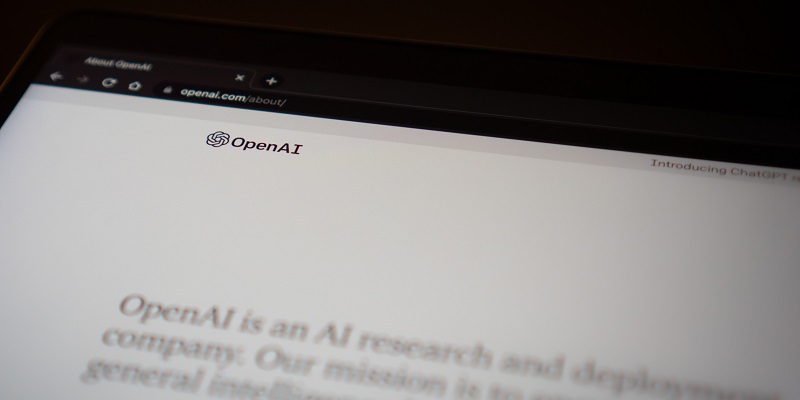In the age of increasingly sophisticated artificial intelligence (AI) technology, the reliability of detecting AI-generated content has become a pressing concern. OpenAI, a leading AI research laboratory, has recently introduced a groundbreaking tool that boasts an impressive “99% reliability” in determining if a picture was produced using AI. This development holds significant implications for the industry, potentially elevating the level of authenticity assurance to unprecedented heights.
Significance of OpenAI’s claim
OpenAI’s claim of achieving near-perfect accuracy in detecting AI-generated images represents a pivotal moment for the industry. As the influence and prevalence of AI-generated content continue to rise, the ability to accurately identify such content becomes crucial. OpenAI’s tool could potentially empower users, content creators, and platforms to combat the spread of misleading information, malicious deepfakes, and other forms of AI-generated content.
Wide-ranging Efforts in Detecting Deepfakes
Recognizing that OpenAI is not the sole player in the field, it is important to acknowledge the collective efforts being made to detect deepfakes. Esteemed tech giants such as Microsoft and Adobe have also entered the arena, rolling up their sleeves to tackle the challenges presented by AI-generated content. This collaborative approach illustrates a united front across different sectors in safeguarding authenticity and enabling vigilance against deceptive practices.
The Transparency Symbol
To assist users in discerning the origin of content and fostering transparency, OpenAI and other entities are introducing the use of a transparency symbol. This symbol serves as a visible marker, enabling users to quickly identify whether the content has been generated by AI. By providing this visual signal, creators and platforms hope to bolster trust and reduce the impact of AI-generated content in dubious contexts.
Technological advancements and societal importance
The innovations spearheaded by OpenAI, Microsoft, Adobe, and other industry leaders transcend mere technological feats; they are also pivotal societal necessities. In an era where misinformation and fake content can spread rapidly, it is imperative to implement robust mechanisms that discern between authentic and AI-generated content. These advancements serve to protect individual privacy, preserve public trust, and uphold the integrity of digital platforms.
Collective efforts for authenticity
OpenAI’s recent move, alongside efforts from Microsoft, Adobe, and other entities, highlights a collective endeavor to ensure authenticity in the digital age. By joining forces, these influential organizations leverage their respective expertise and resources to tackle the multifaceted challenge of AI-generated content. Collaboration in research, technological development, and policy implementation enables a comprehensive response to the escalating threat of AI misuse.
Challenges in detecting AI-generated content
While the strides in detecting AI-generated images are commendable, the dynamic nature of generative AI presents ongoing challenges. Differentiating between authenticity and AI-generated content in text, images, and audio remains a complex task for detectors. As AI technology evolves rapidly, the tools used to detect AI-generated content must also evolve, requiring constant updates and adaptations to stay ahead in the race against deepfakes and AI manipulation.
The Importance of Human Judgment and Vigilance
In the current landscape, human judgment and vigilance remain our strongest defenses against AI misuse. Despite the advancements in AI detection tools, human intuition and critical thinking play a vital role in identifying subtle inconsistencies and contextual cues that AI may struggle to replicate. Combining the capabilities of AI-powered tools with human oversight and scrutiny will contribute significantly to maintaining authenticity and trust.
Collaborative Solutions for the Future
Lasting solutions in the fight against AI-generated content necessitate cohesive efforts from tech leaders, lawmakers, and the public. Collaborative interactions between these stakeholders allow the exploration of ethical frameworks, regulations, and safeguards against the misuse of AI. By fostering open dialogue and collaboration, we can navigate this complex new frontier and strike a balance between advancing AI technology and preserving authenticity.
OpenAI’s introduction of a tool with “99% reliability” in detecting AI-generated images marks a significant milestone in the quest for authenticity assurance. Together with other industry giants like Microsoft and Adobe, OpenAI’s efforts exemplify a collective commitment to combating the challenges posed by AI-generated content. A transparent ecosystem, empowered by advanced detection tools and human judgment, will be pivotal in ensuring that the digital age remains a place of trust, integrity, and authenticity. Only through sustained collaboration among tech leaders, lawmakers, and the broader public can we navigate this complex frontier successfully.

